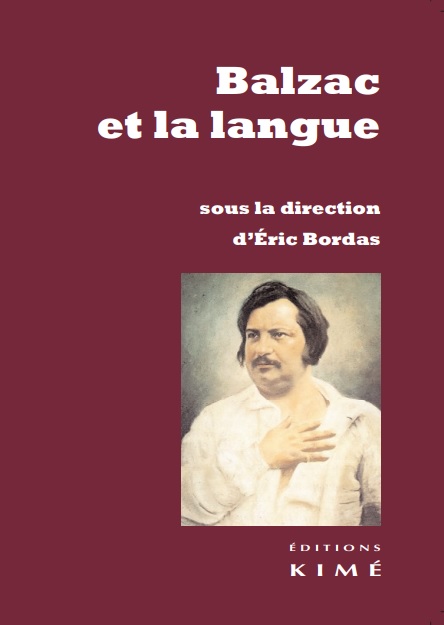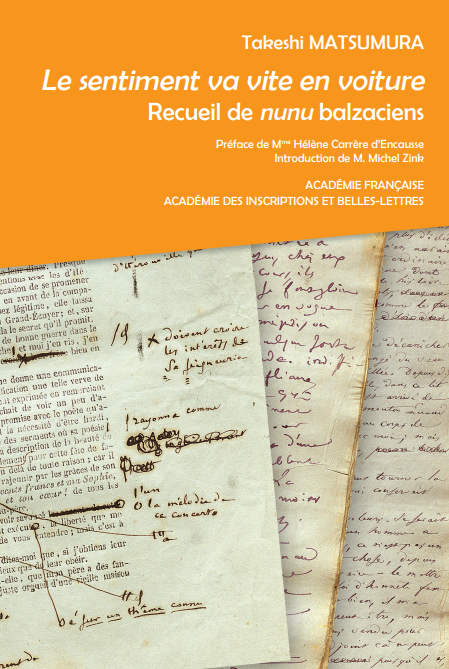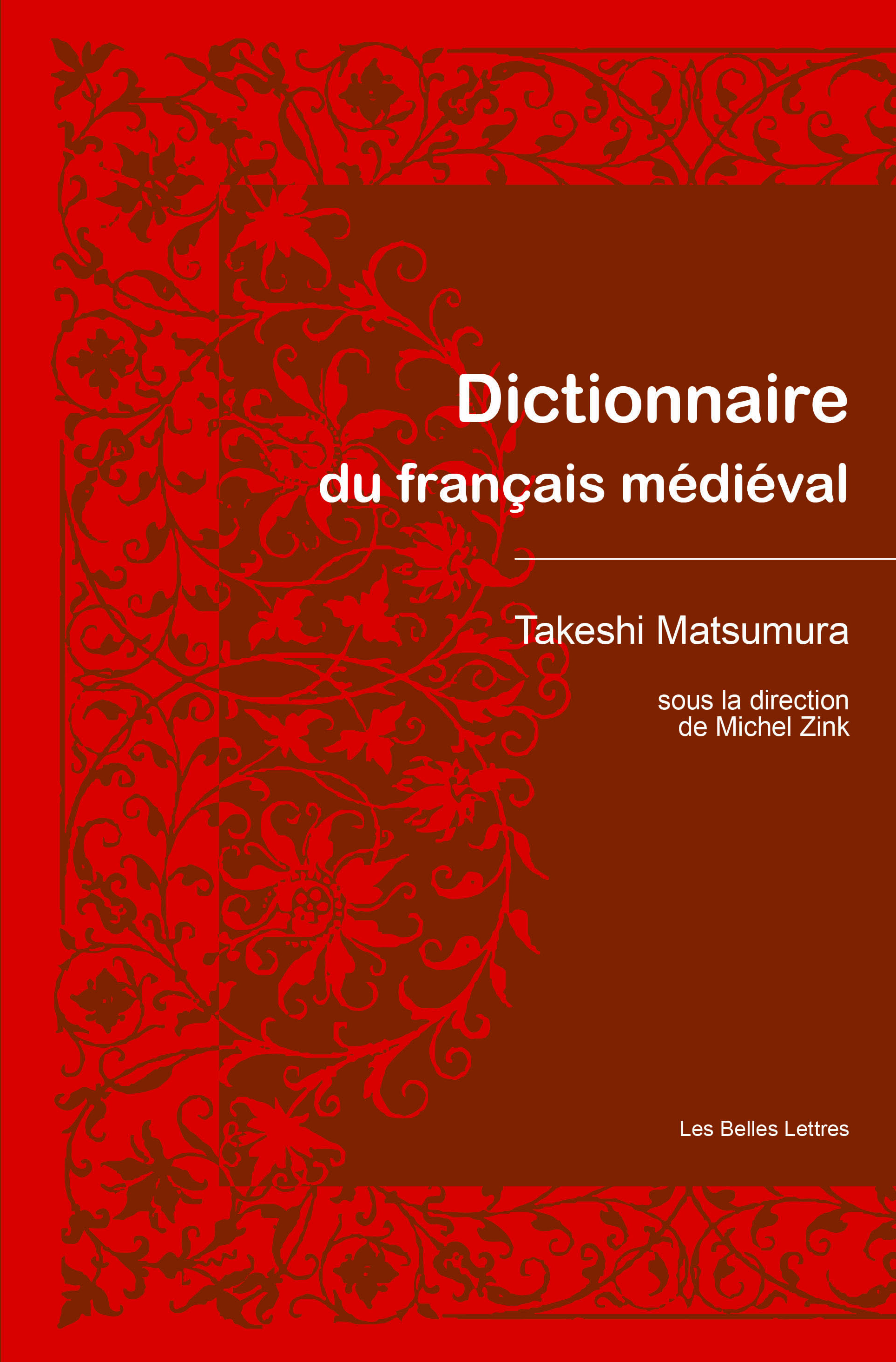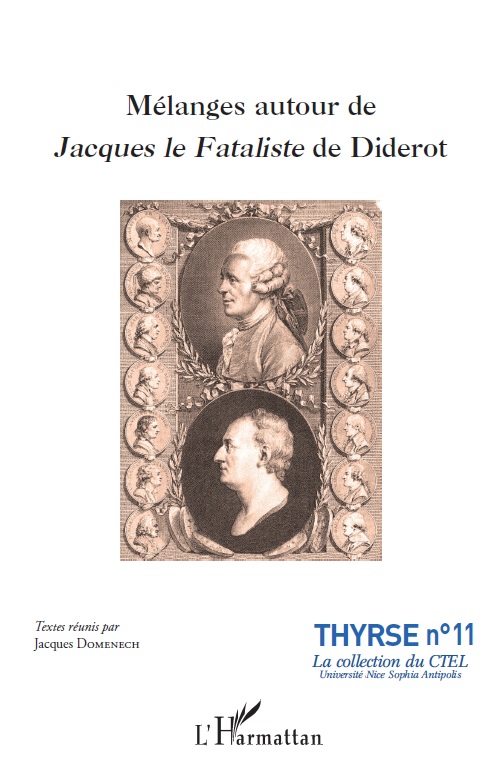
Title
Détours littéraires Balzac et la langue sous la direction d'Éric Bordas
Size
324 pages
Language
French
Released
2019
ISBN
978-2-84174-922-5
Published by
Éditions Kimé
Book Info
See Book Availability at Library
Japanese Page
This book, published in 2019 in Paris, comprises 15 essays edited by Prof. Éric Bordas of the École Normale Supérieure de Lyon on the language used by the 19th-century author Honoré de Balzac whose most famous work is La Comédie Humaine.
Traditionally, the language of this author has been criticized for ignoring the rules of grammar and have been described as “repulsive.” Even supporters of Balzac have had to admit that Balzac struggled with writing and that, although he was well-versed in the French language, he used it in a unique way. The essays in this book reexamine such evaluations by exploring the author’s view of language through his works and considering what he was trying to accomplish.
The essay by the linguist Jacques-Philippe Saint-Gérand, emeritus professor at Clermont-Ferrand University and the University of Limoges, provides a clear answer regarding the formation of the conventional criticism of Balzac’s language. He identifies the ideological basis for such evaluation of Balzac’s language by literary scholars and linguists at the end of the 19th century and beginning of the 20th century and how their evaluations influenced the perceptions of subsequent readers and researchers. It is evident that such evaluations have consistently constrained the manner in which people interact with Balzac’s works.
The historical linguist Prof. Gilles Siouffi of the Sorbonne University argues that Balzac was not trying to use the systematized, statically unchanging language that had been developed in the 18th century in his works but, rather, assigned different way of speaking to various characters based on the different rules of language use that existed for different socioeconomic classes, occupations, regions, etc. in an attempt to reproduce the living language while taking into account popular trends in language use. In so doing, Siouffi suggests the possibility of reconsidering Balzac’s revolutionary use of language from the standpoint of historical linguistics.
While the majority of essays in this book deal with La Comédie Humaine, I chose to discuss Balzac’s Contes Drolatiques. The collection of short comic stories is written in a style that imitates language used in the 15th and 16th century. Although Balzac proudly proclaimed it to be his magnum opus, it is difficult for readers who are only familiar with modern French and has been little researched. That said, upon closer examination, the work contains many valuable examples of word usage that help with understanding La Comédie Humaine and can serve as a useful document from the standpoint of the French historical linguistics. In this sense, it is likely to be the subject of further research.
The book demonstrates that, even in the case of a topic that we believe has been exhaustively researched, we can still gain unexpected new insights if we are willing to question conventional wisdom, change our vantage point, and focus on new aspects.
(Written by MATSUMURA Takeshi, Professor, Graduate School of Arts and Sciences / 2020)
Table of Contents
Gilles Siouffi, Balzac artisan d’une linguistique barbare
Takayuki Kamada, Le travail de la langue dans les avant-textes de Balzac : le cas de documents « intermédiaires »
Joël Zufferey, La réécriture de La Peau de chagrin : arrêt sur un moment grammatical
Rudolf Mahrer, Dynamique de la phrase balzacienne. Approches textuelle et génétique de la phrase dans La Peau de chagrin (1835-1838)
José-Luis Diaz, Mots nouveaux, mots à la mode : Balzac théoricien et praticien du néologisme
Romain Jalabert, Quand Balzac écrit en vers...
Takeshi Matsumura, Langue drolatique ? Quelques remarques lexicographiques et onomastiques sur Le Péché vesniel
Érik Leborgne, La parole de Gobseck, usurier laconique
Agnese Silvestri, Ce qui se dit par la langue dans Le Cousin Pons
Vincent Bierce, « La Croyance est également une langue » : Balzac et la phraséologie métaphysique
Jacques Dürrenmatt, Flaubert face à Balzac : un problème de déphrasage ?
Jacques-Philippe Saint-Gérand, À Brunot, Bruneau et demi !... Balzac, Madame Honesta et la Doxa
Marie-Christine Aubin, Traduire l’oralité balzacienne : le problème des accents
Takao Kashiwagi, La tentation de la réécriture : traduction et réception de Balzac au Japon



 Find a book
Find a book




